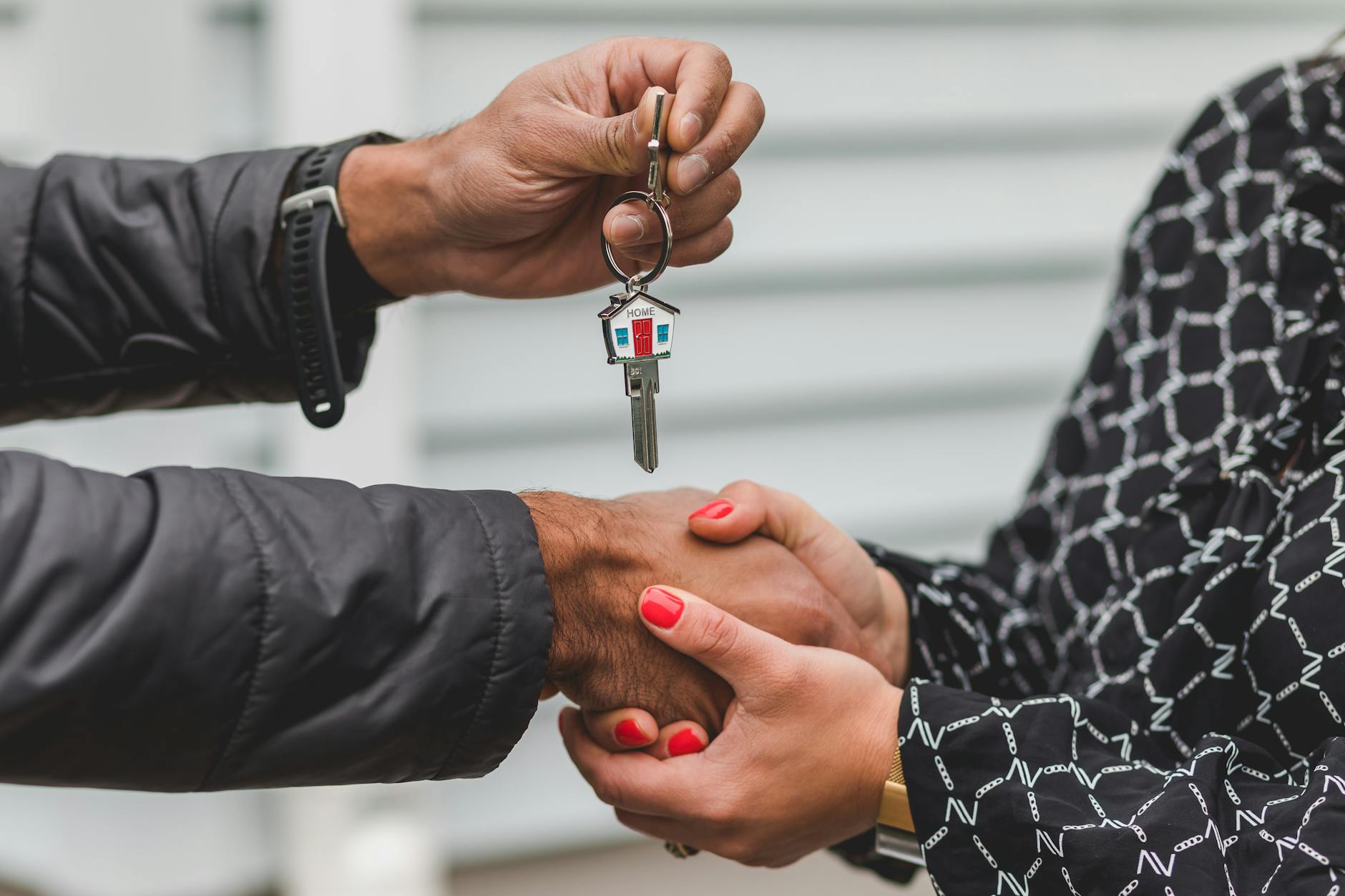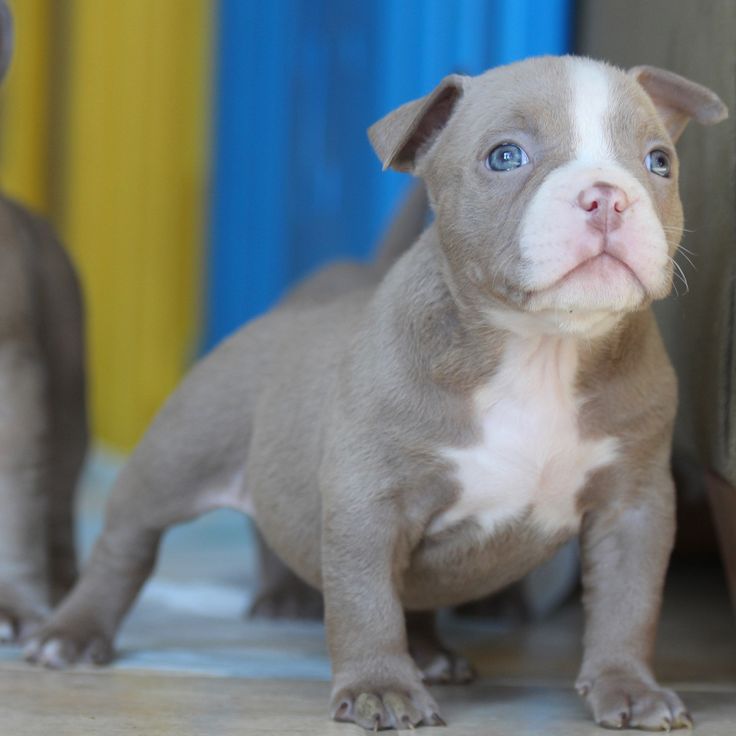Grooming Your Boerboel Puppy: Essential Tips for Owners [Guide]
Owners of Boerboels know that grooming this impressive breed can seem overwhelming at first, but it doesn’t have to be. These South African Mastiffs are not just loyal companions; they also come with unique grooming needs that every owner should be aware of.
With a short, dense coat, Boerboels require less frequent grooming compared to other breeds. However, regular brushing and occasional baths will keep their coat healthy and shiny. It’s important to pay close attention to their facial wrinkles, as a little care goes a long way in maintaining skin health.
We’ll cover essential tips on how to groom your Boerboel effectively. You’ll learn about the tools you need and how to handle their grooming routine. Whether you’re a new owner or a seasoned one, mastering these grooming techniques will enhance your dog’s well-being and strengthen your bond.
For more detailed guidance on dog grooming, check out this informative guide about Airedoodle puppies. Ready to make grooming a breeze? Let’s get started!
If you want to see grooming tips in action, watch this YouTube video on Boerboel grooming.
Understanding the Boerboel Breed
The Boerboel is an impressive breed known for its strength, loyalty, and protective instincts. Originating from South Africa, these dogs were developed for the purpose of guarding homesteads and livestock. This rich history shapes not only their physical attributes but also their temperament. A well-rounded understanding of Boerboels can enhance how you care for and groom them.
History of the Boerboel
The Boerboel’s lineage traces back to the early settlers in South Africa who required a robust dog for protection against wild animals and intruders. Bred from various mastiff-type dogs, Boerboels were favored for their adaptability to harsh environments. Their name itself means “farm dog” in Afrikaans, highlighting their primary role as protectors. Over time, they became known for their powerful build and unwavering loyalty to their families.
For an in-depth look into the breed’s history and further details, you can check out DogTime’s Boerboel Breed Information.
Characteristics of Boerboels
Boerboels are known for their impressive size and muscular physique, typically weighing between 110 to 200 pounds. They possess a broad head, strong jaws, and a short coat that requires minimal grooming. A notable characteristic is their unique appearance, combining power with elegance.
Some key physical traits include:
- Height: Generally 24 to 28 inches tall at the shoulder.
- Coat: Short and dense, available in several colors including brindle, fawn, and cream.
- Temperament: Boerboels are protective, loyal, and intelligent, making them great family dogs.
Temperament and Behavior
When it comes to temperament, Boerboels are known for their calm but assertive demeanor. They are devoted to their families and can be reserved around strangers, making them excellent watchdogs. Socialization from a young age is crucial for ensuring they are well-adjusted.
Common temperamental traits include:
- Loyalty: They form strong bonds with their families.
- Protective Nature: They will instinctively defend their territory.
- Intelligence: Boerboels are trainable and eager to please, but they require consistent training and social interactions.
In general, Boerboels thrive on positive reinforcement and structured routines. Understanding these traits will aid you in grooming and caring for your Boerboel effectively.
For more insights into caring for your Boerboel, check out The Spruce Pets’ Breed Profile.

Understanding the Boerboel’s history, characteristics, and temperament equips you with the knowledge needed to provide the best care. As a proud owner, embracing their unique traits makes your journey together more rewarding.
Grooming Basics for Boerboels
Maintaining your Boerboel’s grooming routine is essential not only for their appearance but also for their health. Understanding their coat characteristics, the tools needed for effective grooming, and how often to groom them will help you keep your dog looking and feeling great. Let’s break down these key aspects.
Coat Characteristics
The Boerboel has a short, dense coat that requires minimal grooming compared to other breeds. This coat type is generally low-shedding, which can be a relief for dog owners who wish to reduce indoor allergens. However, it still needs attention to keep it healthy and looking its best. You can expect occasional shedding, especially during seasonal changes, so regular brushing can help manage this.
The texture of their coat allows dirt and debris to collect at times. For this reason, regular grooming not only enhances appearance but also promotes skin health. Inspecting their coat for parasites and skin conditions is also an essential part of grooming.
Tools Required for Grooming
To groom your Boerboel effectively, you’ll need a few basic grooming tools. Here’s a list of essential items:
- Bristle Brush or Slicker Brush: These brushes are great for removing loose hair and debris. They’re particularly effective on a short coat like the Boerboel’s.
- Dog Shampoo: Choose a quality dog shampoo that suits your dog’s skin type. A soothing formula will help maintain their skin’s health.
- Nail Clippers: Keeping your Boerboel’s nails trimmed is important. Regular clipping helps prevent discomfort while walking.
- Ear Cleaner: Don’t forget to keep their ears clean! A gentle ear cleaner can help prevent infections.
- Rubber Grooming Mitt: This tool can aid in removing loose fur and can be used during bath time to make it a more pleasant experience.
Choosing the right tools is crucial. With the right equipment, you can make the grooming process quick and enjoyable for both you and your Boerboel. For tips on specific grooming techniques, feel free to browse Mascot Millenium’s guide on grooming the African Boerboel.
Regular Grooming Schedule
Establishing a regular grooming schedule is essential to keep your Boerboel in top shape. Here’s a simple guide:
- Brushing: Aim to brush your Boerboel once a week to remove loose hair and keep their coat shiny.
- Bathing: Bathe your dog as needed, typically every month. If they spend a lot of time outdoors, more frequent baths may be beneficial.
- Nail Trimming: Check their nails every 4-6 weeks and trim them as necessary. If you hear clicking sounds when they walk, it’s likely time for a trim.
- Ear Cleaning: Inspect their ears weekly and clean them as needed to prevent wax buildup and infections.
Keeping a routine ensures your dog’s comfort and health. It also strengthens the bond between you and your Boerboel. If you want more information on grooming schedules for different breeds, refer to Potty Registered Puppies’ guide on Cairn Terrier grooming.

Caring for your Boerboel’s grooming needs will keep them looking great and feeling even better. Commit to a regular routine and watch your dog thrive!
Bathing Your Boerboel
Bathing your Boerboel is an essential part of their grooming routine. Regular baths not only keep your dog’s coat clean but also ensure their skin stays healthy. Knowing when and how to bathe your Boerboel will help them feel great and look even better.
Frequency of Baths
How often you should bathe your Boerboel largely depends on their activity level and lifestyle. If your dog enjoys outdoor activities like running through mud or playing in water, more frequent baths may be necessary. Generally, a good rule of thumb is to bathe your Boerboel once a month. However, keep in mind:
- Active Dogs: If your Boerboel is particularly active or spends lots of time outside, you may need to bathe them every two weeks.
- Less Active Dogs: For those that are mostly indoor pets, a bath every 6-8 weeks should suffice.
- Skin Conditions: If your Boerboel has skin allergies or sensitivities, consult your vet for a tailored bathing schedule.
Regular baths help remove dirt, dander, and excess oil, contributing to overall skin health. Plus, who doesn’t love a clean, fresh-smelling dog?

Choosing the Right Shampoo
Picking the right shampoo for your Boerboel is crucial to their grooming routine. Since they have a short coat and relatively sensitive skin, certain shampoos may be more beneficial than others. Here are some types of shampoos to consider:
Always read the labels and avoid shampoos that contain harsh chemicals or fragrances, as they can irritate your dog’s skin. Consult your vet for personalized recommendations if you’re unsure.
Maintaining a proper bathing routine for your Boerboel will not only enhance their appearance but will promote their overall health. Regular baths combined with the right grooming practices will keep your Boerboel happy and healthy.
Dealing with Shedding
Shedding is a common concern for many Boerboel owners. While these dogs have short, dense coats, they do shed, especially during seasonal changes. Managing this shedding effectively not only keeps your home cleaner but also contributes to your dog’s overall health and comfort. Here are some straightforward techniques for dealing with shedding in Boerboels.
Brushing Techniques
Effective brushing can significantly reduce loose hair and help keep your Boerboel’s coat in top shape. Here are some techniques to consider:
- Choose the Right Brush: A slicker brush or a bristle brush works wonders for a Boerboel’s short coat. These brushes efficiently remove loose fur, preventing it from spreading around your home.
- Establish a Routine: Brush your Boerboel at least once a week. During shedding season, you may want to increase this to 2-3 times a week. This not only helps manage shedding but also allows you to check for any skin issues or parasites.
- Brush to the Skin: Make sure to brush down to the skin, as this helps remove the undercoat and promotes healthy circulation. Take your time; a gentle yet thorough brushing session can be a bonding experience for you and your dog.
- Use Correct Techniques: Start brushing from the head and move toward the tail, using long, even strokes. Be cautious around sensitive areas, like their face and tail, to keep the experience pleasant.
For detailed guidance on how to effectively groom your dog, check out the Cairnoodle Dog Breed Grooming guide.
Vacuuming and Cleaning Tips
Even with a solid brushing routine, some shedding is inevitable. Here are some cleaning tips to keep your space tidy:
- Regular Vacuuming: Establish a vacuuming schedule, ideally once or twice a week, to keep hair accumulation in check. Consider using a vacuum designed specifically for pet hair to tackle stubborn fur effectively.
- Use Lint Rollers: Keep lint rollers handy for quick clean-ups on furniture and clothing. They are excellent for those sudden moments when you need to look presentable.
- Wash Blankets and Bedding: If your Boerboel has favorite resting spots, regularly wash blankets and bedding to remove any hair and keep their sleeping areas fresh.
- Furniture Covers: Use washable furniture covers to protect your couch or chairs. This way, you can simply toss them in the wash instead of trying to vacuum hair off your furniture.
- Air Filters: Consider using air filters or purifiers to help manage airborne pet dander. This can significantly reduce allergens and keep your living space comfortable.
For more insights on managing shedding, check out these 6 Tips to Control Dog Shedding.

Managing shedding in your Boerboel doesn’t have to be a daunting task. With the right techniques and a bit of dedication, you can keep your home clean and ensure that your dog is comfortable and well-groomed.
Nail Care and Ear Cleaning
Nail care and ear cleaning are essential parts of grooming your Boerboel. Both of these tasks contribute significantly to your dog’s comfort and overall health. By adopting proactive routines for nail trimming and ear cleaning, you can help ensure your Boerboel feels their best.
Nail Trimming Techniques
Keeping your Boerboel’s nails at an appropriate length is important for their mobility and comfort. Overgrown nails can cause pain and make it difficult for your dog to walk properly. Here are some effective nail trimming guidelines and recommended tools:
- Choose the Right Tools: Use high-quality dog nail clippers or a nail grinder. Clippers designed for larger breeds are suitable for Boerboels. Nail grinders can provide a smooth finish, reducing the risk of breaking the nail.
- Create a Relaxed Environment: Make nail trimming a positive experience. Use treats and patience. Familiarize your Boerboel with the clippers or grinder beforehand. Let them sniff it and become comfortable with the sensation by gently touching their paws.
- Know the Quick: The quick is a sensitive part of the nail that contains blood vessels and nerves. Avoid cutting into the quick as it can cause bleeding and pain. For dogs with dark nails, trim a little at a time to avoid cutting too deep. If you see a small dark circle at the tip, stop there.
- Trimming Technique: Hold the paw firmly but gently. For clippers, position the blade just below the quick and apply steady pressure to trim off the tip. For grinders, keep the tool steady against the nail and work slowly until you achieve your desired length.
Check out these tips for stress-free dog nail trims for additional techniques and advice. Aim to trim your Boerboel’s nails every 4-6 weeks.

Ear Cleaning Routine
Regular ear cleaning helps prevent ear infections and maintains your Boerboel’s ear health. Boerboels have floppy ears that may trap moisture and debris; here’s how to keep their ears clean and healthy:
- Frequency: Inspect your dog’s ears weekly and clean them as needed. If you notice any wax build-up or unpleasant odor, it’s time for a cleaning.
- Gather Supplies: Use a vet-approved ear cleaner and cotton balls or pads. Avoid using cotton swabs, which can push debris deeper into the ear canal.
- Cleaning Steps:
- Safety First: Begin by speaking softly to your Boerboel to calm them. You might need someone to help hold them still, especially if they are energetic.
- Apply Cleaner: Squeeze a few drops of ear cleaner into the ear canal, as directed on the product label.
- Massage the Base: Gently massage the ear base for about 30 seconds. This helps the solution break up wax and debris. You’ll hear a squishing sound as the cleaner mixes with impurities.
- Wipe Away Residue: Let your dog shake their head (a natural instinct) to get rid of excess cleaner. Use a cotton ball to wipe away any remaining wax or cleaner from the inner ear.
For more detailed instructions on how to clean ears effectively, follow this guide on cleaning your dog’s ears. Keeping a consistent ear cleaning routine can help prevent future health issues for your Boerboel.
By integrating these nail care and ear cleaning routines into your dog grooming regimen, you’ll ensure your Boerboel stays healthy and comfortable. A well-groomed dog is a happy dog!
Professional Grooming Considerations
Grooming a Boerboel can sometimes require professional help, depending on various factors such as your dog’s behavior, health issues, or your own comfort level with grooming tasks. While regular brushing and bathing can be managed at home, specific situations call for professional attention to ensure your Boerboel’s well-being.
When to Seek Professional Help
There are several scenarios where professional grooming becomes necessary:
- Severe Matting: If your Boerboel’s coat develops severe matting that you cannot resolve with your grooming tools, it might be time to consult a professional. A groomer has the skills and equipment to handle matted fur safely and effectively.
- Skin Issues: If you notice signs of skin irritation, rashes, or unusual lumps during your grooming sessions, a vet or professional groomer can assess your dog’s skin condition better and recommend the right treatment or care plan.
- Nail Trimming Expertise: While you may be comfortable trimming your dog’s nails, some Boerboels can be particularly anxious during this process. A professional groomer can handle this task efficiently, ensuring both your comfort and your dog’s safety.
- Behavioral Challenges: If your Boerboel struggles with fear or aggression during grooming, a professional is trained to manage such behavior and ensure that your dog has a positive experience.
- Health Checks: Professional groomers are skilled at identifying potential health concerns. They can catch problems such as ear infections, dental issues, or skin infections that you might not have noticed.
You can learn more about the benefits of professional grooming from Emi Pet, where they discuss the importance of health checks during grooming.
Finding a Suitable Groomer
Choosing a reputable dog groomer is vital for your Boerboel’s comfort and health. Here are some tips to help you find the right fit:
- Look for Credentials: Ensure that the groomer has the necessary training and experience, especially with large breeds like Boerboels. Certification from recognized grooming schools can be a good sign.
- Read Reviews: Check online reviews and testimonials from other pet owners. Positive feedback can give you confidence in a groomer’s abilities.
- Visit the Grooming Facility: Take a trip to the grooming salon beforehand. This allows you to assess the cleanliness of the environment and the overall professionalism of the staff. A friendly atmosphere can help ease your dog’s anxiety.
- Ask About Techniques: Inquire about the groomer’s techniques and tools. A good groomer will use methods that minimize stress for your dog and will be open to discussing their practices with you.
- Observe Interactions: Watch how the groomer interacts with dogs. A calm demeanor can help ensure that your Boerboel feels secure during the grooming process.
You can get additional insights on choosing a groomer by visiting 12 Professional Dog Grooming Tips, which includes useful advice on developing a grooming routine that works for both you and your dog.

Making the right choice in grooming ensures that your Boerboel enjoys a positive experience while maintaining their health and appearance. Be attentive to your pet’s needs, and don’t hesitate to seek professional help when necessary.
Common Grooming Mistakes to Avoid
Grooming your Boerboel can come with its own set of challenges. Whether you’re a seasoned dog owner or a newbie, avoiding common mistakes is crucial to ensuring your pet remains healthy and comfortable during grooming sessions. Here are some significant pitfalls to steer clear of.
Overbathing
One of the most common mistakes is overbathing your dog. Though it may seem logical to wash your Boerboel frequently, doing so can lead to dry skin. Regular bathing strips essential oils, which keep their coat healthy and shiny. Aim to wash your Boerboel every month or as needed, based on their activity level.
Consider this: just like our skin, a dog’s skin has natural oils that protect it. Bathing too often is like washing your hands every five minutes—eventually, they would become dry and cracked. Stick to a bathing schedule to maintain a healthy coat. For more on this topic, check out Common Dog Grooming Mistakes.
Incorrect Brushing Technique
It’s essential to brush your Boerboel correctly to avoid discomfort and ensure a good grooming experience. Many owners make the mistake of brushing while their dog’s coat is still wet. This can cause mats and knots. Instead, wait until their coat is completely dry before brushing. Not only will this make brushing more effective, but it will also keep your dog more comfortable.
Additionally, using the right brush is key. A slicker brush or bristle brush works best for their short coat. Establish a brushing routine at least once a week. This helps manage shedding and keeps their coat looking healthy.
Neglecting Wrinkles
Boerboels are known for their facial wrinkles, which require special attention. Many owners forget to clean these folds, which can lead to skin irritations or infections. Make it a habit to gently wipe out these wrinkles with a damp cloth during grooming sessions. This simple practice prevents moisture build-up and ensures your dog stays comfortable.
Skipping Ear Care
Another common mistake is neglecting ear cleaning. Boerboels have floppy ears that can trap moisture and dirt, making regular checks and cleanings essential. Aim to inspect their ears weekly. If you notice any odor or debris, clean them with a vet-approved ear cleaner. Avoid using cotton swabs, as they can push dirt deeper into the ear canal.
A quick tip: if your dog has been swimming or playing in water, make sure to dry their ears afterward. Keep an eye out for redness or discharge; if you notice these signs, seek professional advice. For more tips on ear care, don’t hesitate to check out The Top 5 Dog Grooming Mistakes You Should Avoid.
Inadequate Nail Trimming
Many owners either forget to trim their dog’s nails or avoid it altogether. Long nails can cause discomfort and even lead to mobility issues. Establish a regular schedule for trimming nails every 4 to 6 weeks. Tools like clippers or grinders work well for Boerboels. If you’re unsure or find it difficult, consider seeking help from a professional groomer.
Ignoring Brushing Frequency
Lastly, some owners don’t brush their Boerboels often enough. Inadequate brushing can lead to a build-up of loose hair and dirt, making grooming more difficult and uncomfortable for both you and your dog. Schedule weekly brushing sessions and maintain a clean coat. Remember, a clean dog is a happy dog!

Avoiding these common grooming mistakes will help keep your Boerboel healthy and comfortable. With awareness and proper techniques, grooming can be an enjoyable experience for both you and your loyal companion.
Conclusion
Grooming is an important aspect of caring for your Boerboel. While this breed requires minimal grooming due to its short coat, establishing a consistent grooming routine is essential for both their appearance and health.
The Significance of Grooming
Regular grooming helps in a multitude of ways. It keeps their coat healthy and shiny while also allowing you to monitor their skin for any changes. Grooming promotes good blood circulation and creates a bonding experience between you and your dog. As you brush and bathe them, they receive a gentle massage, which can help reduce stress and improve their mood.
Links for further reading on grooming’s importance:
Key Grooming Practices
Incorporating key grooming practices into your routine is crucial. This includes regular brushing, timely baths, and ear cleaning. Each of these tasks plays a role in your dog’s health. Moreover, paying attention to their nails and wrinkles is vital for their overall well-being.
When in doubt, don’t hesitate to consult a professional groomer for guidance or assistance. They can provide expertise and help ensure your Boerboel is groomed correctly.
Building a Connection
Ultimately, grooming is not just a chore; it’s a way to connect with your Boerboel. This time spent together can enhance trust and understanding, fostering a strong bond between you and your furry friend. Make grooming a positive experience, and your dog will look forward to it.

In conclusion, a well-groomed Boerboel is a happy Boerboel. Prioritize grooming, and enjoy the benefits for both you and your dog!

































